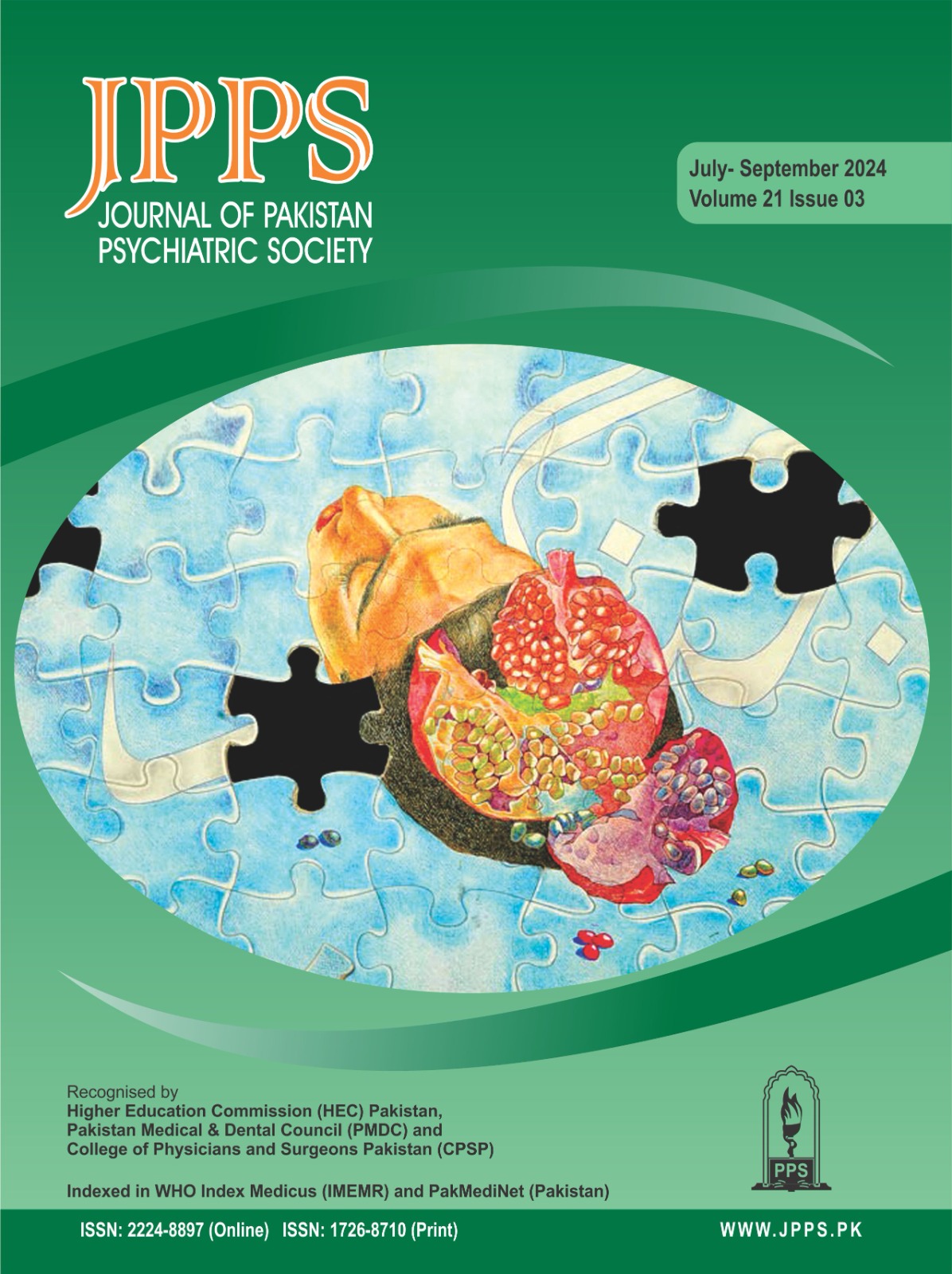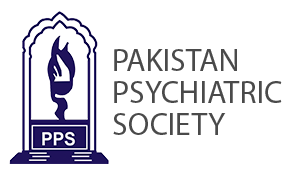RETRACTED- SEASONAL AFFECTIVE DISORDER AMONG UNDERGRADUATE STUDENTS IN PESHAWAR DISTRICT
A retraction has been issued for this article: (DOI: https://doi.org/10.63050/jpps.22.1.1047)
Abstract
OBJECTIVE
To find the frequency of seasonal changes on undergraduate students and make a comparison between undergraduate students on the basis of the prevalence of Seasonal affective disorder. (SAD).
STUDY DESIGN
Cross-sectional study
PLACE & DURATION OF STUDY
Data were collected from different universities in Peshawar city, including Khyber Medical University, Abasyn University, Peshawar University, Cecos University, and Rehman Medical Institute, from 7 January 2022 to 17 November 2022.
METHOD
The sample size consisted of 100 undergraduate students from different universities in Peshawar (N = 100). Their ages ranged from 18 to 26 years old. The Seasonal Pattern Assessment Questionnaire (SPAQ) along with a demographic information sheet and informed consent sheet were administered.
RESULTS
Results revealed that among 100 participants, 71 were affected by SAD. Further on, it was elaborated that female students have high rates of SAD as compared with male students.
CONCLUSION
The results of the study confirmed the presence of seasonal affective disorder among undergraduate students with a large female population being affected by it.
Downloads
References
Partonen T, Lönnqvist J. Seasonal affective disorder. Lancet. 1998;352(9137):1369-1374. doi:10.1016/S0140-6736(98)01015-0
Magnusson A, Boivin D. Seasonal affective disorder: an overview. Chronobiol Int. 2003;20(2):189-207. doi:10.1081/cbi-120019310
Otte C, Gold SM, Penninx BW, et al. Major depressive disorder. Nat Rev Dis Primers. 2016;2:16065. doi:10.1038/nrdp.2016.65
Fonte A, Coutinho B. Seasonal sensitivity and psychiatric morbidity: study about seasonal affective disorder. BMC Psychiatry. 2021;21(1):317. doi:10.1186/s12888-021-03313-z
Kurlansik SL, Ibay AD. Seasonal affective disorder. Am Fam Physician. 2012;86(11):1037-1041.
Attar-Levy D. Les dépressions saisonnières [Seasonal depression]. Therapie. 1998;53(5):489-498.
Rosenthal NE, Sack DA, Gillin JC, et al. Seasonal affective disorder. A description of the syndrome and preliminary findings with light therapy. Arch Gen Psychiatry. 1984;41(1):72-80. doi:10.1001/archpsyc.1984.01790120076010
Mersch PP, Vastenburg NC, Meesters Y, et al. The reliability and validity of the Seasonal Pattern Assessment Questionnaire: a comparison between patient groups. J Affect Disord. 2004;80(2-3):209-219. doi:10.1016/S0165-0327(03)00114-9
Danilenko KV, Levitan RD. Chapter 17 - Seasonal affective disorder. In: Aminoff MJ, Boller F, Swaab DF, Shlaepfer TE, Nemeroff CB, editors. Handbook of Clinical Neurology (3rd; vol. 106). Amsterdam, The Netherlands: Elsevier; 2012. p. 279–289.
Brancaleoni G, Nikitenkova E, Grassi L, Hansen V. Seasonal affective disorder and latitude of living. Epidemiol Psichiatr Soc. 2009;18(4):336-343. doi: https://doi.org/10.1017/S1121189X00000312
Yasmin H, Naveed Riaz M, Nasir F. Epidemiological Study on the Prevalence of Winter Depression in Pakistan. Journal of Development and Social Sciences. 2022;3(2):655-662.
doi: https://doi.org/10.47205/jdss.2022(3-II)59
Saleem S, Mahmood Z, Naz M. Mental Health Problems in University Students: A Prevalence Study. FWU Journal of Social Sciences. 2013;7(2):124-130.
Sharif A, Riaz MN. Longitudinal study on seasonal affective disorders in Pakistan. Rawal Medical Journal. 2020; 45(2): 327-330.
Winthorst WH, Roest AM, Bos EH, Meesters Y, Penninx BWJH, Nolen WA, et al. Seasonal affective disorder and non-seasonal affective disorders: Results from the NESDA study. BJPsych Open. 2017;3(4):196–203. doi:10.1192/bjpo.bp.116.004960
Winthorst WH. Light upon seasonality: seasonality of symptoms in the general population and in patients with depressive and anxiety disorders. [Groningen]: Rijksuniversiteit Groningen, 2020. 130 p. doi: 10.33612/diss.112728722
Copyright (c) 2024 Journal of Pakistan Psychiatric Society

This work is licensed under a Creative Commons Attribution-NonCommercial 4.0 International License.
Copyright © JPPS. Published by Pakistan Psychiatric Society
Licensing: This work is licensed under Creative Commons Attribution-NonCommercial 4.0 International License
Readers may “Share-copy and redistribute the material in any medium or format” and “Adapt-remix, transform, and build upon the material”. The readers must give appropriate credit to the source of the material and indicate if changes were made to the material. Readers may not use the material for commercial purposes. The readers may not apply legal terms or technological measures that legally restrict others from doing anything the license permits.






.png)









